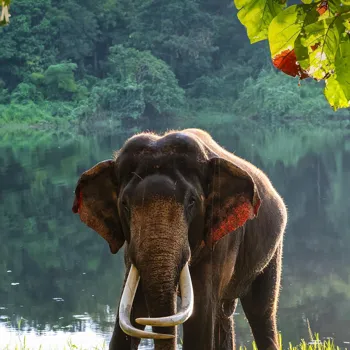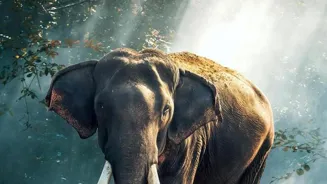Discover the Asian Elephant's Wonders: 10 Fascinating Insights. Unveil the gentle giant's world - a tale of wisdom and survival
From temple grounds to dense forests, the Asian elephant, a gentle giant,
holds a special place in India's heart and culture. These majestic creatures, distinct from their African cousins, are not just symbols of power and wisdom but also vital contributors to the delicate balance of our ecosystems.
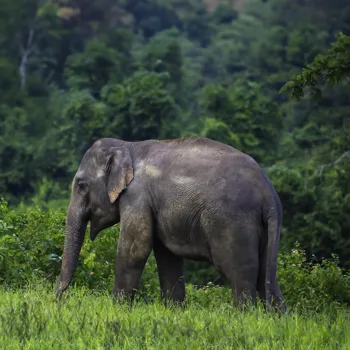
Understanding their unique characteristics and challenges is crucial for their conservation. Let's delve into ten fascinating facts about these incredible animals:
Asian elephants differ from African elephants in size, ears, tusks, and skin texture
Unlike their African counterparts, Asian elephants possess several distinctive features. They are generally smaller in size, with a more convex back.
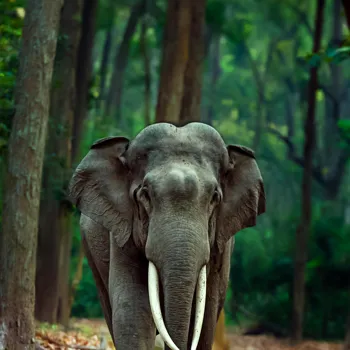
One of the most noticeable differences lies in their ears – Asian elephants have smaller, rounded ears compared to the large, fan-shaped ears of African elephants. Only male Asian elephants typically have tusks (elongated incisor teeth), while female tuskers are rare.
These ivory tusks are prized for their artistic value, but that also leads to rampant poaching, threatening the very existence of the elephant. These gentle giants are also known to have only one trunk finger, the tactile projection used for grasping.
Their skin is also smoother when compared to the African cousins.
Asian elephant social structure revolves around the matriarch leading family herds
Asian elephants live in close-knit family groups, typically led by the oldest and most experienced female, the matriarch. These herds consist of related females and their young offspring.

The matriarch guides the group, making crucial decisions about foraging, migration, and protection from predators. Male elephants, on reaching adulthood, usually leave their natal herds to live solitary lives or form loose alliances with other males.
This social structure ensures the survival and well-being of the younger elephants, who learn essential life skills from their mothers and other female relatives. Learning social skills is important.
Elephants, vital herbivores, consume 150kg plants daily, aiding biodiversity
Elephants are herbivores, meaning they primarily feed on plants. They consume a vast amount of vegetation daily – up to 150 kilograms! Their diet consists of grasses, bamboo, leaves, bark, roots, and fruits.
Given their large size and dietary needs, elephants spend a significant portion of their day foraging for food. They play a crucial role in seed dispersal and maintaining the biodiversity of their habitats.
Their feeding habits also help create pathways and clear undergrowth, benefiting other species in the ecosystem. They spread different seeds when they rosm in the area.
Elephants communicate using various methods, requiring large social groups
Elephants are highly intelligent and communicate with each other in various ways. While vocalizations like trumpeting, roaring, and rumbling are common, they also use infrasound – low-frequency sounds that travel long distances.
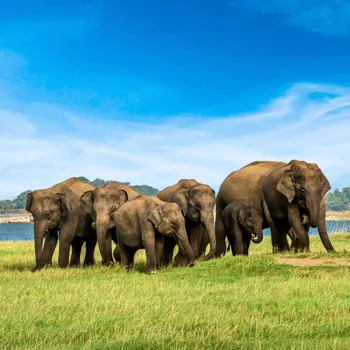
These sounds, inaudible to humans, allow elephants to communicate over several kilometers. They also use body language, touch, and scent to convey messages and maintain social bonds.
Studies have shown that elephants have excellent memory and can recognize individuals even after long periods of separation. Because elephants are intelligent and social, they require big groups to keep them active.
Asian elephants face habitat loss and conflict due to human activities
Asian elephants are found in diverse habitats across Asia, including India, Sri Lanka, Thailand, Indonesia, and Malaysia. They inhabit tropical and subtropical forests, grasslands, and scrublands. Their distribution is closely linked to the availability of food and water.
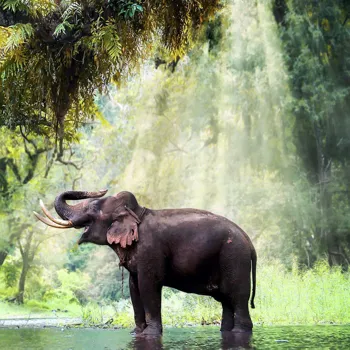
Habitat loss and fragmentation due to human activities pose a significant threat to their survival. As forests are cleared for agriculture and development, elephants are forced into smaller, isolated areas, leading to increased conflict with humans.
Protecting and restoring their natural habitats is crucial for their long-term conservation. Elephants need different landscapes.
Asian elephants endangered due to habitat loss, poaching, and conflict; conservation efforts crucial
The Asian elephant is classified as an endangered species by the International Union for Conservation of Nature (IUCN). Their population has declined significantly in recent decades due to habitat loss, poaching for ivory (tusks), and human-elephant conflict.
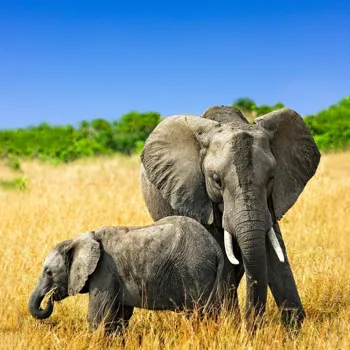
Conservation efforts are focused on protecting their habitats, combating poaching, and mitigating conflict with humans. Community-based conservation programs that involve local communities in protecting elephants and their habitats are also essential.
Raising awareness about the importance of elephant conservation and promoting sustainable practices are vital for their future. Elephants are an important species that needs protection.
Elephant's trunk: versatile, strong, sensory tool for survival
The elephant's trunk is an extraordinary appendage, a fusion of the nose and upper lip. It is an incredibly versatile tool, used for breathing, smelling, drinking, grasping, and communicating. The trunk contains over 40,000 muscles, allowing for precise movements and incredible strength.
Elephants use their trunks to pluck leaves from trees, uproot vegetation, suck up water, and even greet each other with a gentle touch. The trunk is also highly sensitive, enabling elephants to detect odors and vibrations in the ground.
Elephants show remarkable intelligence and empathy
Elephants are known for their remarkable intelligence and cognitive abilities. They have a large brain, relative to their body size, and exhibit complex social behaviors, problem-solving skills, and self-awareness.
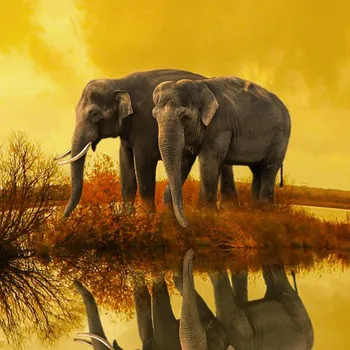
Studies have shown that elephants can recognize themselves in a mirror, a sign of self-awareness. They also display empathy and compassion towards other elephants, comforting those in distress and mourning the loss of deceased members of their herd. Their intelligence is also used to train them.
Human-elephant conflict due to habitat encroachment
As human populations expand and encroach upon elephant habitats, human-elephant conflict is becoming increasingly common. Elephants often raid crops, damage property, and sometimes even injure or kill people. In retaliation, people may kill or injure elephants.

Addressing human-elephant conflict requires a multi-pronged approach, including habitat management, electric fencing, translocation of elephants, and community-based conservation programs.
Finding ways for humans and elephants to coexist peacefully is essential for the long-term survival of the species.
Asian elephants hold a significant place in the culture and traditions of many Asian countries, particularly India. They are revered as sacred animals and are often associated with deities and royalty. Elephants are used in religious ceremonies, festivals, and processions. They also play an important role in tourism, providing rides and entertainment for visitors. However, it is crucial to ensure that elephants are treated humanely and that their welfare is prioritized in all human-elephant interactions.
These incredible creatures face numerous challenges; understanding these facts are essential for securing their future. By supporting conversation efforts and raising awareness, we can all play a part in ensuring that these magnificent animals continue to roam the earth for generations to come.
